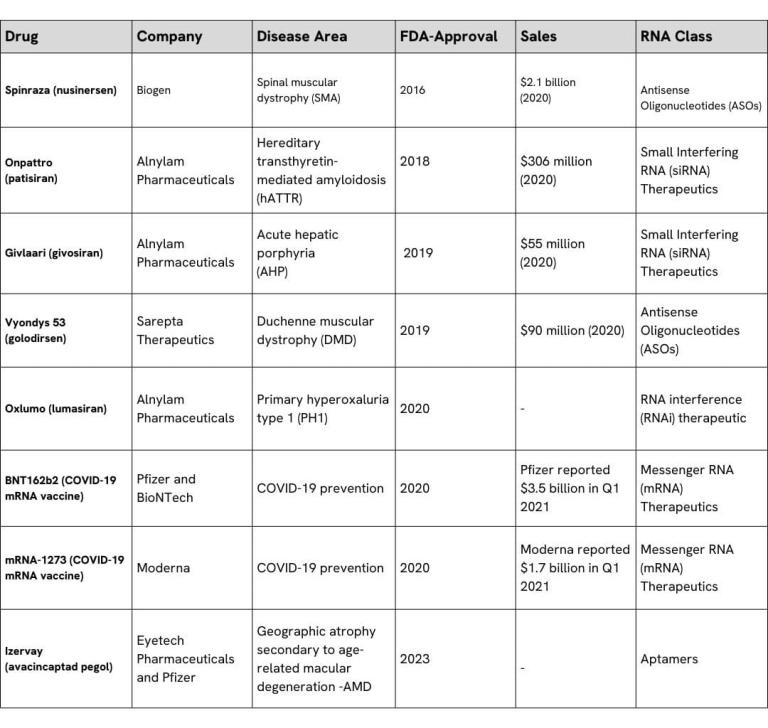Signals One™ Unlocks RNA's Potential | Revvity Signals Software
RNA-based drugs have historically been overshadowed by DNA-based therapies. However, RNA therapeutics are gaining prominence in drug discovery due to their potential to treat a wide range of disorders.
This shift in attention gained momentum during the COVID-19 pandemic when RNA became a household word. The Pfizer-BioNTech and Moderna vaccines, both of which use messenger RNA (mRNA), highlighted the power of RNA therapies, demonstrating how quickly and effectively RNA technology could be harnessed to develop vaccines.
The success of these vaccines opened regulatory doors for further advancements in preventing and treating various diseases with RNA-based technologies. It also paved the way for a new era in medical treatments, encouraging more research and investment in RNA therapeutics.
An RNA Revolution: Breaking Ground in New Areas
RNA therapies are set to revolutionize modern medicine. Their development relies heavily on informatic software and computational tools, which enable researchers to understand and manipulate RNA sequences for new insights into their capabilities. The potential of RNA extends beyond traditional treatments, offering hope for a plethora of medical conditions. While, RNA-based vaccines have been pivotal in combating recent viral outbreaks, RNA diagnostics are enhancing the precision of disease detection; and RNA therapeutics are carving a path for novel drug development.
Vaccines
The Covid-19 pandemic introduced the world to one class of RNA therapies known as messenger RNA or mRNA. Used in vaccines, it marked the first time an RNA drug was licensed for widespread human use. mRNA works by providing instructions to the immune system to produce a response that can protect against the virus in the future, unlike conventional vaccines which use an inactive form of the virus to train the immune system.
Diagnostic Technologies
RNA also play a crucial role in diagnostics due to the sensitivity in detecting biomarkers. The implications are significant – imagine diagnosing cancers, neurodegenerative diseases, and cardiovascular diseases sooner. One major RNA class that facilitates this type of work is RNA aptamers. These are used in diagnostic assays to detect specific proteins or other molecules. They can be engineered to bind with high specificity to target analytes, making them useful in various diagnostic applications, including biosensors and imaging technologies.
Drug Development
The potential for curing the incurable and exponentially advancing personalized medicine is evident in drug design targeting RNAs such as Antisense Oligonucleotides (ASOs). These therapies offer hope for treating rare diseases that currently lack effective treatments. For example, ASOs are designed to target and degrade the mRNA that encodes the mutant protein responsible for Huntington's, a devastating disease which causes the breakdown of brain nerve cells affecting movement, cognition, and psychiatric symptoms.
This table highlights several of the top-grossing and diverse RNA therapeutics that have been FDA-approved or are in clinical trials within the last 10 years.

Challenges and Promise in R&D Research
While the rapid advancements and successes in RNA therapeutics have demonstrated their transformative potential, the field still faces significant challenges that need to be addressed to fully realize their benefits. Challenges include:
- Instability of RNA Molecules: RNA molecules are inherently unstable and prone to degradation by nucleases, which complicates their storage and application.
- Efficient and Targeted Delivery Systems: Effective delivery systems must protect RNA from degradation, facilitate cellular uptake, and ensure precise targeting to avoid ineffective or harmful outcomes.
- Immune System Activation: RNA molecules can activate the immune system, potentially leading to inflammatory responses or other adverse effects that can limit their therapeutic efficacy.
- Off-Target Effects: Ensuring specificity through large data sets and collaboration is crucial to minimize unintended interactions that could cause harmful effects or reduce therapeutic effectiveness.
- Manufacturing and Scalability: Scaling up RNA production while maintaining consistent quality and purity is essential for widespread clinical use and commercialization.
- Regulatory and Safety Concerns: Navigating the regulatory landscape for RNA therapeutics is complex, requiring adherence to rigorous standards to ensure safety and efficacy.
- Cost: The development and production of RNA-based therapeutics can be prohibitively expensive due to the complexity and novelty of the technology, impacting accessibility and affordability.
- Durability and Long-term Effects: Assessing and ensuring the long-term efficacy and safety of RNA-based therapeutics is crucial for their sustained clinical use.
- Integration with Existing Therapies: Effectively combining RNA-based therapies with current treatments poses challenges in optimizing treatment regimens and managing potential interactions.
Navigating Challenges: Advancing RNA Therapeutics
Despite these significant challenges, continuous advancements and innovative strategies are fostering optimism that these obstacles have started to be overcome, to unlock the full potential of RNA therapeutics. Solutions include:
- AI Ready-Data: AI plays a significant role in RNA therapy development offering increased speed of information-gathering to augment scientists’ work. It also offers advancements like ShapeTX’s leveraging AI to create RNA-targeted therapies for genetic disorders. By building a comprehensive training dataset for their AI engine, they aim to make programmable RNA medicine accessible to all.
- CRISPR Technology: CRISPR is crucial in RNA drug development, enabling precise gene editing and modulation. This allows for the design and optimization of RNA-based therapies, creating more effective and targeted treatments.
- Collaboration and Partnerships: Partnerships between academic institutions, biotech companies, and pharmaceutical firms drive innovation and reduce off-target effects.
- Delivery Mechanisms: Improving pathways and optimizing delivery vehicles, such as nanoparticles and liposomes, enhancing RNA stability and efficacy.
- Software Support: Software tools to model RNA providing the tools sets to create, manage and test the vast number of RNA species. In addition, predictive modeling opens the ability to better understand immune interactions and off-target effects earlier within the R&D cycle.
Revvity Signals Commitment to the Future of RNA Therapies
Signals One may not be able to address every challenge mentioned above ex: improving the stability of your mRNA, but we have created a modality agnostic platform that has RNA specific tools for leading biopharmaceutical companies to easily capture data, communicate, test, and make data-driven decisions on how to progress your RNA pipelines. One highlight is our ability to meet both chemists and RNA biologists needs via HELM visualizations of ex: modified oligonucleotides. By aligning your RNA biologists and chemists all in a single platform we ensure greater speed, better communication and overall improved data accuracy, consistency, and manageability.
If you’re interested in learning more about multimodal drug discovery click here to download Pioneering New Modalities for Therapeutic Leadership.
If you need more information on this topic or any of our solutions please do contact us.

Zev Wisotsky, Ph.D.
Sr. Principal Marketing ManagerZev is a Sr. Principal Marketing Manager for Biologics in the Signals Suite. His scientific training and research background includes neuroscience, biochemistry, molecular biology, and drug discovery. He has spent 7+ years in software in go-to-market teams across industries with a heavy focus on biopharma/biotech R&D.
